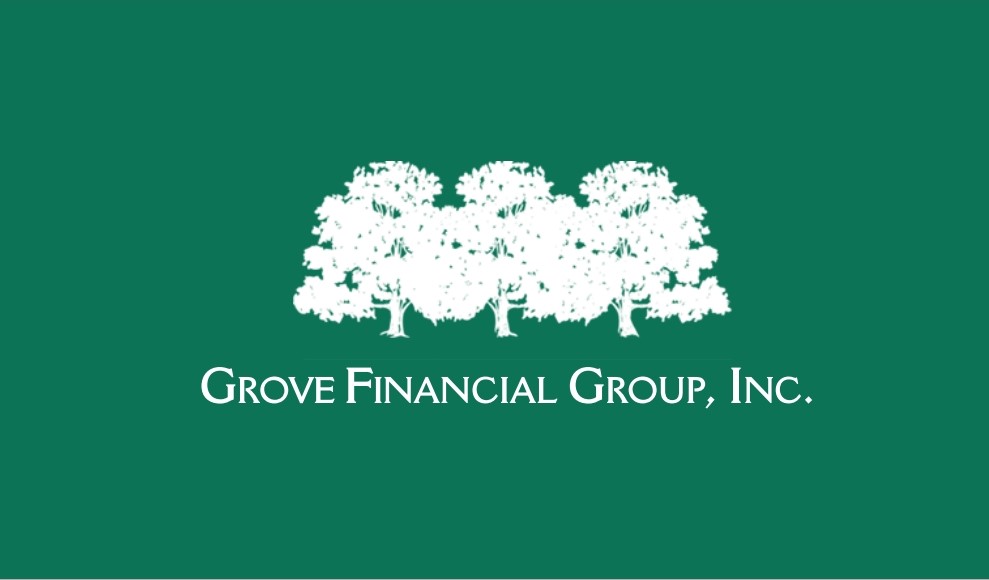- July 4, 2025
- by Leon Grove
- Estate Planning, Finance, News, Retirement Planning
Breaking Down Financial Silos: A Holistic Approach to Wealth
Opening Hook: Challenging Conventional Wisdom
Here’s what the financial industry doesn’t want you to know: your biggest financial risk isn’t market volatility or economic downturns—it’s the way you’ve been taught to manage your money.
For decades, we’ve been told to compartmentalize our finances. Get an investment advisor for your portfolio. See an accountant for taxes. Call an insurance agent for coverage. Visit an attorney for estate planning. Each expert operates in their own silo, optimizing their piece of your financial puzzle without seeing the bigger picture.
This fragmented approach is quietly sabotaging your wealth.
While you’re busy following conventional wisdom—diversifying your portfolio, maxing out your 401(k), and reviewing your insurance annually—you’re missing the exponential power that comes from integration. The wealthiest families don’t just accumulate assets; they orchestrate every element of their financial lives to work in perfect harmony.
What if everything you’ve been taught about financial planning is backwards?
Key Concept: The Hidden Cost of Financial Fragmentation
Traditional financial planning treats your wealth like a collection of separate bank accounts, each managed independently. But real wealth works more like a symphony—every instrument must be perfectly coordinated to create something beautiful.
The Silo Trap: How Good Advice Becomes Bad Strategy
Consider the Johnson family’s story. On paper, they did everything right:
Investment Silo: Their financial advisor built a diversified portfolio worth $1.2 million, consistently earning 7% annually. The strategy looked perfect in isolation.
Tax Silo: Their accountant minimized their tax burden each year, saving thousands through deductions and credits. Another win in isolation.
Insurance Silo: Their agent provided comprehensive coverage—life, disability, and liability insurance. They felt protected in isolation.
Estate Planning Silo: Their attorney created a trust to avoid probate and minimize estate taxes. Smart planning in isolation.
The Devastating Result: When market volatility hit their portfolio in 2022, they had to sell investments at a loss to pay unexpected taxes triggered by their trust structure. Their insurance policies weren’t coordinated with their estate plan, creating a massive tax burden for their heirs. Their “optimized” strategy cost them over $300,000 in avoidable losses.
Each advisor gave good advice. Together, they created a financial disaster.
The Integration Advantage: How Coordination Creates Exponential Returns
Now consider the Martinez family, who took a holistic approach:
Coordinated Investment Strategy: Their portfolio was designed not just for growth, but for tax efficiency and estate planning flexibility. Asset location strategies placed the right investments in the right accounts.
Integrated Tax Planning: Investment decisions were made with tax implications in mind. Roth conversions were timed during market downturns, turning volatility into tax savings.
Strategic Insurance Design: Life insurance policies were structured as part of their estate plan, providing liquidity while reducing estate taxes.
Dynamic Estate Planning: Their trust structure was designed to complement their investment strategy, not conflict with it.
The Multiplication Effect: During the same 2022 market volatility, the Martinez family actually increased their wealth. Market downturns became Roth conversion opportunities. Tax-loss harvesting generated additional savings. Their integrated approach turned a crisis into an advantage.
The Four Pillars of Integrated Wealth Protection
- Strategic Risk Orchestration Instead of buying insurance as an afterthought, integrate protection into your wealth strategy:
- Life insurance that funds estate liquidity while reducing taxes
- Disability coverage that maintains investment contributions during crises
- Liability protection that shields assets while preserving growth potential
- Emergency reserves that provide flexibility without killing returns
- Tax Integration Mastery Every financial decision becomes a tax decision when properly coordinated:
- Investment withdrawals timed to optimize tax brackets across decades
- Charitable giving structured to maximize deductions while achieving impact
- Business income planning that coordinates with personal tax strategy
- Estate planning that minimizes taxes across generations
- Dynamic Estate Coordination Estate planning becomes a living strategy that enhances current wealth:
- Trust structures that provide flexibility while achieving specific goals
- Asset titling that optimizes both protection and tax efficiency
- Succession planning that preserves wealth through transitions
- Beneficiary strategies that coordinate with lifetime tax planning
- Behavioral Integration The most sophisticated strategy fails without behavioral alignment:
- Decision frameworks that remove emotional biases from financial choices
- Automated systems that execute strategies without constant intervention
- Communication protocols that keep all advisors working toward the same goals
- Family governance that prepares heirs for responsible stewardship
Practical Application: Your Integration Action Plan
Phase 1: The Silo Assessment (Week 1)
Audit Your Current Fragmentation:
- List all your financial advisors and when they last communicated with each other
- Identify conflicts between different pieces of advice you’ve received
- Calculate the hidden costs of uncoordinated strategies
- Map your current risk exposures across all areas of your financial life
Warning Signs You’re Operating in Silos:
- Your investment advisor doesn’t know your tax bracket
- Your insurance agent has never seen your estate planning documents
- Your accountant isn’t involved in your investment decisions
- You’ve never had all your advisors in the same room
- Your financial strategies change when you switch advisors
Phase 2: The Integration Opportunity Analysis (Week 2)
Identify Your Biggest Integration Wins:
Tax Integration Quick Wins:
- Review asset location: Are your investments in the most tax-efficient accounts?
- Analyze withdrawal strategies: Could you reduce lifetime taxes by changing your sequence?
- Evaluate charitable strategies: Are you maximizing deductions while achieving impact?
- Assess business structures: Is your entity choice optimizing both business and personal taxes?
Insurance Integration Opportunities:
- Compare your life insurance with your estate planning needs
- Evaluate whether your disability coverage aligns with your investment contributions
- Review liability limits against your actual asset exposure
- Consider whether your insurance is tax-efficient or creating unnecessary burdens
Estate Planning Coordination:
- Ensure beneficiary designations align with your will and trust provisions
- Review whether your trust structure complements your investment strategy
- Evaluate whether your estate plan reflects your current financial reality
- Consider whether your succession planning optimizes both family and tax outcomes
Phase 3: The Implementation Strategy (Week 3-4)
Create Your Integration Team:
- Establish regular communication protocols between all advisors
- Define clear roles and responsibilities for each team member
- Create shared documentation that everyone can access and update
- Schedule quarterly coordination meetings to review progress and adjust strategies
Implement Your Priority Integrations:
- Start with the highest-impact, lowest-risk coordination opportunities
- Document the expected benefits of each integration
- Create monitoring systems to track actual results
- Build in flexibility to adjust as circumstances change
Establish Your Integration Metrics:
- Define success metrics that measure coordination, not just individual performance
- Track after-tax returns, not just pre-tax performance
- Monitor risk-adjusted outcomes across your entire financial life
- Measure progress toward your integrated goals, not just account balances
Phase 4: The Continuous Optimization Process (Ongoing)
Quarterly Integration Reviews:
- Assess whether your strategies are still working in harmony
- Identify new coordination opportunities as your situation evolves
- Adjust for changes in tax law, market conditions, or personal circumstances
- Celebrate the compound benefits of your integrated approach
Annual Strategy Alignment:
- Review whether your integrated strategy is still serving your deepest values
- Evaluate whether your coordination is keeping pace with your wealth growth
- Consider whether new integration opportunities have emerged
- Ensure your team is still working effectively together
Call to Action: Join the Integration Revolution
The question isn’t whether you can afford to integrate your financial strategy—it’s whether you can afford not to.
The families building lasting wealth aren’t just accumulating assets; they’re orchestrating every element of their financial lives to work in perfect harmony. They’re turning market volatility into tax opportunities, converting insurance premiums into estate planning tools, and transforming charitable giving into multigenerational wealth strategies.
Your Turn to Break Down the Silos:
Share Your Experience: What financial silos have you discovered in your own planning? Comment below and let’s discuss how integration could transform your approach.
Start Your Integration Journey: If you recognize yourself in the fragmented approach, you’re not alone. Schedule your complimentary Wealth Protection Audit with Grove Financial Group Inc. at 888-676-0196. We’ll help you identify the integration opportunities that could save you thousands and protect what you’ve worked so hard to build.
Join the Conversation: Share this article with someone who might be operating in financial silos. Often, the biggest breakthrough comes from recognizing that there’s a better way.
Challenge the Status Quo: The next time a financial advisor gives you advice without considering your complete picture, ask them how their recommendation integrates with your other strategies. If they can’t answer, it might be time to find advisors who understand the power of coordination.
The future of wealth building isn’t about having the best individual strategies—it’s about having strategies that work best together.
What integration opportunity will you tackle first? The conversation starts now.
Next in the Four Pillars series: Pillar 3 – Freedom: Designing a Life of Purpose and Choice
Ready to break down your financial silos and build an integrated wealth strategy? Your holistic approach to true prosperity starts with a single conversation.




